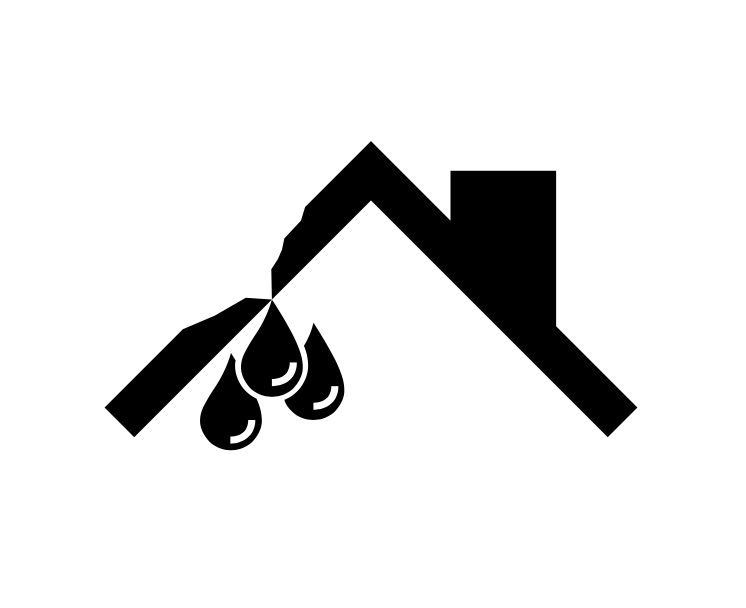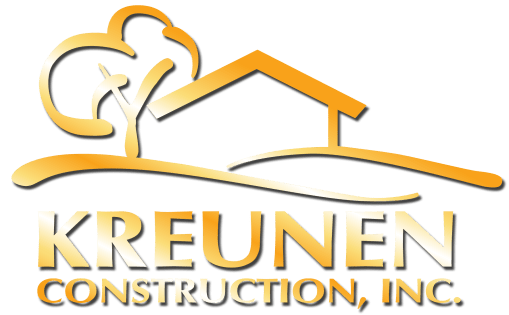Why Is My Roof Leaking?
Why is my roof leaking? This is a common question at some point in many Memphis homeowners’ life. Roof leaks are a common domestic problem. They are not only an aesthetic issue. If you don’t address them promptly, they can scale in the medium term, causing severe damage to your home structure.
Indeed, a roofing leak may become a nightmare. Usually, it brings many associated issues and points out possible non-detected roofing damage. Damage insulation, rotted frames, damaged shingles, and mold can emerge quickly. Even it may compromise your family health.

Besides, when facing these problems is not an easy task to find a roof leak origin. That water stain in your ceiling tells you that water is making its way through your roof. However, the starting point of this way is usually not evident. This characteristic adds more stress to the problem.
Experienced roofers know that the correct way to detect a leak source is going backward, starting where the damage is evident. Typically, the water will filter your roof layers, flow along the rafters, and then drip down. Water goes causing damage in its path.
Roof Leaks Causes
An aging roof is generally the cause of roofing leaks. Roofing materials suffer over time normal wear and tear process. So, they deteriorate, losing their effectiveness against weather elements, including water.
- Protrusion leaks:
Roofs are not totally flat surfaces. It is usual to see salient or protrusions coming up from them. These elements are plumbing vents, dormers, and chimneys. The area where these protrusions join to the roof has a sealant to avoid the rainwater filtering to your home.
Over time, the seal deteriorates, appearing cracks and splits opening ways for water filtering and leaks.
- Flashing issues:
The wear and tear process also affects those pieces of slim metal along the joints of your roof. Those pieces are the flashing, and their purpose is to give a watertight seal. Often, roofers use tar to seal flashing together. However, the sun’s rays also melt it.
When flashing deteriorates, they crack or even pull away, leaving the area exposed to weather elements. Thus, this is another possible source of roof leaks.
- Cracked chimney:
Homeowners love to have fireplaces in their homes. But, when the flashing cracks, come loose, or mortar begins to break off around the chimney, they turn into a headache.
Does your roof leak through your chimney during heavy storms? The reason is that the connection between the chimney and the roof is damaged. In consequence, rainwater will slip through.
- Cracked vents or booting:
The metal or plastic boots covering the joint between vents and plumbing, and the roof are placed to prevent water from causing leaks. As other sealing elements mentioned before, they suffer wear and tear. So, rubber boots will tear, and metal boots will rust and lose their screws.
All these issues lead to roofing leaks. Damaged boots let the water entering your home. Also, a leaky vent will trap moisture, giving pace to leaks and water damage.
- Dormer walls:
Water does not only enter inside homes through shingles. Dormer walls are also a key place for leaks. Often, wind-driven rain comes from the sides. It penetrates around windows edges, between corner boards, and cracks in the siding.
The sealing surrounding dormers may be expired and cracked, or even missing. So, water penetrates these cracks making its way into your home.
Cracks around dormers are openings that ease water getting behind the flashing. Then, it will slide into your home, damaging rafters, walls, and the ceiling.
Damage-Related Leaks
Protrusions in your roof are not the only source of leaks. Roofs are elements continuously exposed to the weather impact a wear and tear process is normal. So, when homeowners conduct periodical and proper maintenance, the roofs can resist this process and extend their shingles’ life.
However, many times homeowners don’t carry out proper and timely roofing maintenance tasks. So, damage-related leaks appear.
- Broken or missing shingles:
If a shingle breaks, slides, or falls, it will expose the roofing deck leading to leaks and humidity inside your home. A broken shingle can result from roofing deterioration, the presence of mold and moss, or heavy storms.
Roof leaks due to broken or missed shingles are one of the easiest to detect. Inspecting the roof, even from the ground, should be enough to spot the issue.
Remind that flat roofs are prone to accumulate rainwater. Hence, inspect them often, looking for signs of damage. Since damage is harder to detect in these types of roofs, you could require a professional to inspect your roof.
Do you feel comfortable getting up on a ladder? So, get up to your roof and look for damage like blistering. In case you find problems like this, you should schedule a professional inspection to assess the damage extension.
We strongly recommend a professional evaluation if you are not an experienced handyman.
- Clogged gutters or Ice dam buildup:
The gutter system’s purpose is to allow the water and melted snow to flow away from your home. But, when leaves or ice accumulation clog the gutters, the water will get back to your roof.
If you don’t eliminate the clog promptly, the water will get under your shingles. Besides, if it finds any small crack in your roof structure, it will end filtering inside your home.
Moreover, refrozen ice may cause damage to your shingles and even to the gutters. So, cleaning your gutters at least once a year will help you to prevent roof leaks.
- Indoor leaks:
The first thing everybody assumes when detecting the water damage is that it comes from a roof leak. But, sometimes, the origin of the problem is inside the house. For example, condensation and overflowing in HVAC systems can cause significant water damage.
- Condensation in your attic:
A difference in temperature generates from outside and inside your home when there is poor insulation in your attic. This effect can cause moisture growth and condensation in your attic.
Your attic will require attention if you spot mold or mildew as well as a musty odor. Be attentive to these signs. If you detect them, your attic could require better ventilation. By solving this issue, the moisture in the air will have ways to get out to the outside.
- Shiners:
When an attic space has poor ventilation, moisture tends to adhere to the nails that fix the rafters. During cold nights, humidity can turn into frost on the nails. So, it makes the nails look like they shine. But, moisture will melt again in the morning. If you ignore this issue, it may cause damage to your roof and ceiling.
You can avoid roofing leak damage by checking your attic and performing quick roofing inspections. But, if you get major problems, you should call for professional help. He will guide you on how to proceed.
Trust Kreunen Construction with Your Roofing Needs
Sometimes, leak repairs cannot solve roofing problems. When this happens, there is no other way than to replace the roof.
So, call the Kreunen Construction specialists at 901-763-8506 or visit us online. You can get an estimate and see how our 50-year warranty works.
We build trust and peace of mind into every Kreunen roof in Olive Branch, Southaven, or Memphis, TN.








